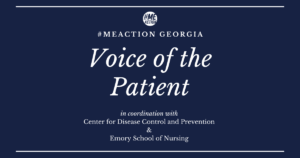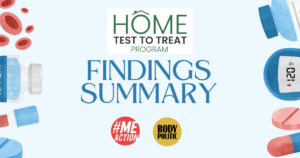In his Virology blog post, David Tuller examines results of ‘sister’ to the PACE trial
In 2003, when the United Kingdom (UK) Medical Research Council announced the PACE trial, they also announced the Fatigue Intervention by Nurses Evaluation (FINE) trial. Why haven’t we heard more about it? David Tuller examined the study, the results and how the results were shared in “Why has the PACE Study’s “Sister Trial” been “Disappeared” and Forgotten”. Below is a summary of David’s fascinating findings.
Announcing the trial
The FINE trial tested two treatments: pragmatic rehabilitation and supportive listening (alongside a control group). The trial used the Oxford criteria, the same as PACE. The Medical Research Council announced it at the same time as the PACE trial and committed 1.3 million pounds. It included 296 participants.
The theory behind the FINE trial was similar to PACE’s. Physical symptoms were presumed to be the result of “deconditioning” or “dysregulation” caused by sedentary behavior, disrupted sleep cycles and stress. The sedentary behavior was presumed to be due to patients’ “unhelpful” conviction that they suffered from a progressive medical illness.
While the trial was underway
The treatment manual for pragmatic rehabilitation told participants the therapy could help them get better—even though the trial itself was designed to test the effectiveness of the therapy.
“This booklet has been written with the help of patients who have made a full recovery from Chronic Fatigue Syndrome,” stated the FINE pragmatic rehabilitation manual on its second page.
A qualitative study about the FINE research process showed the frustration of nurses and the anger of trial participants:
Their [the nurses’ ] frustration has reached the point where they sort of boiled over. There is sort of feeling that the patient should be grateful and follow your advice, and in actual fact, what happens is the patient is quite resistant and there is this thing like you know,“The bastards don’t want to get better.”
Results of the FINE trial
BMJ published the FINE results in 2010. The FINE investigators found no statistically significant benefits to either pragmatic rehabilitation or supportive listening at 70 weeks.
Patients were evaluated at 20 weeks as well, but 70 weeks was the ‘primary outcome point’.
There was a small improvement at 20 weeks, so this is what the authors chose to report on first in the paper’s abstract.
The FINE paper cited no oversight committee approval for this expanded interpretation of the trial’s primary outcome points to include the 20-week assessment, nor did it mention the protocol’s caveat about the “misleading” nature of short-term assessments in chronic health conditions.
When the first PACE results were published in The Lancet the following year, the investigators did not mention the FINE trial.
Post-publication fiddling
A month after publishing the study, the investigators analyzed it using a different scoring method. They now reported a “clinically modest, but statistically significant effect” of pragmatic rehabilitation at 70 weeks.
Tom Kindlon, a patient and advocate, responded to the FINE investigators’ decision:
“I’m sure many pharmacological and non-pharmacological studies could look different if investigators decided to use a different scoring method or scale at the end, if the results weren’t as impressive as they’d hoped,” he wrote. “But that is not normally how medicine works. So, while it is interesting that the researchers have shared this data, I think the data in the main paper should be seen as the main data.”
Coverage
The Science Media Centre in London doesn’t appear to have publicized the 2010 release of the FINE trial, despite its interest in the topic.
Other researchers paid scant attention to the FINE trial, especially compared to the PACE study. According to Google Scholar, the 2011 PACE paper in The Lancet has been cited 355 times. In contrast, the 2010 FINE paper in BMJ has only been cited 39 times.
Read Tuller’s analysis in full.





